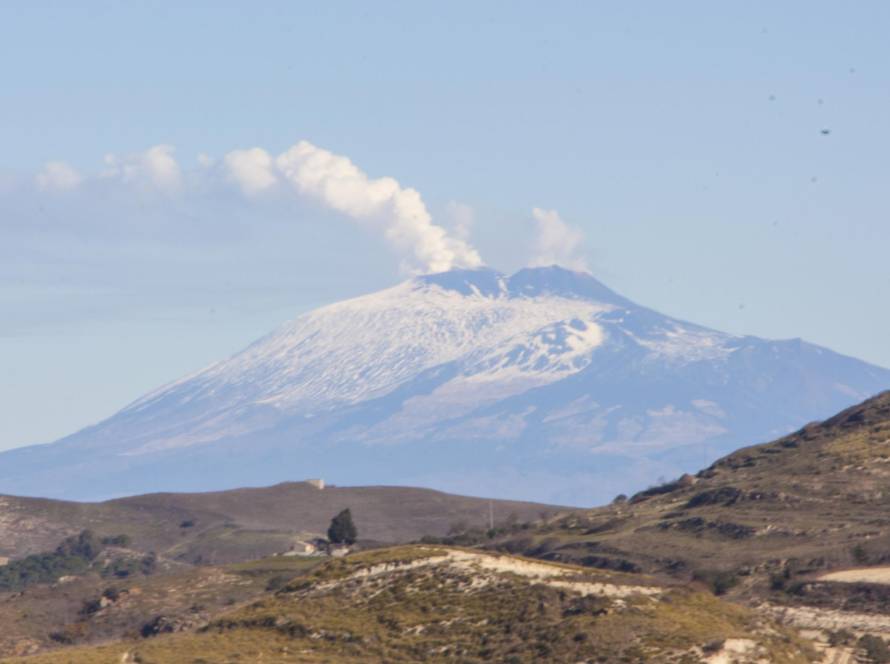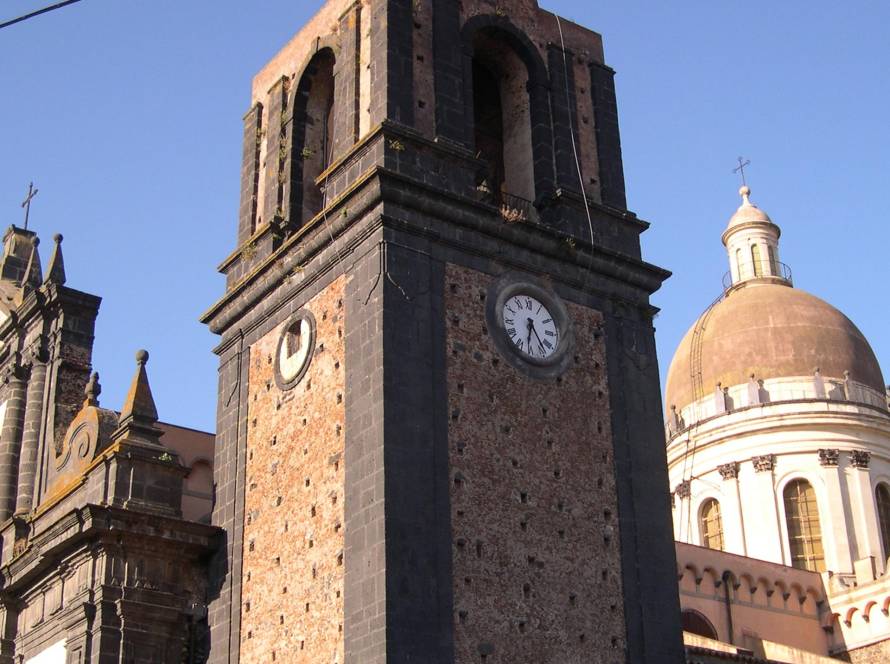Zafferana Etnea rises at 574 m. s.l.m., on the eastern slopes of Etna, the largest active volcano in Europe. It extends up to the summit of the volcano, including in its territory landscapes of inestimable naturalistic beauty, from dense woods to expanses of lava desert.
It is one of the municipalities of the Etna Regional Park and its territory includes the three large valleys which, according to accredited hypotheses, represent the testimony of the sequence of the volcano’s genesis: Valle del Bove, Val Calanna and Valle San Giacomo.
When visiting Zafferana there is nothing better than combining the rediscovery of tradition, local products and typical gastronomy with the pleasure of a walk in the middle of chestnut woods, immersed in a landscape with a luxuriant and bursting face, or from the almost lunar appearance, dusty and black. Just equip yourself with a dose of goodwill and comfortable clothing to dive into nature and let yourself be carried away by smells, sounds and colors.
It doesn’t take much to clear your mind and indulge in a little relaxation, along one of the many paths of the Etna Park.
A relationship of hate – love binds Zafferana Etnea to Etna. The memory of the danger escaped in 1992 is still vivid in the memory, when the lava stopped not far from the inhabited center, changing the appearance of Val Calanna. The flow is visible by following the appropriate signs and a votive stele dedicated to Our Lady of Providence, patron saint of Zafferana, has been erected in its vicinity as a sign of thanks.
But the lava stone has become in the hands of skilled artisans material to be molded from which to obtain building material (paving stones for the streets and slabs and blocks for the coverings of lava stone walls) but also art objects (sculptures).
The volcanic nature of the soil rich in mineral salts and the sandy texture of the soil are ideal conditions, offering a unique contribution to the ripening of the grapes. The tradition of the places is flanked by modern winemaking and production technologies, preserving the typicality and authenticity of the wines produced on Etna. Among the cultivated varieties are Etna red and Nerello mascalese and Nero d’Avola.
It is called the “gold of Etna”, we are talking about the honey made in Zafferana Etnea, considered the Italian capital of honey; the town of Etna boasts a very high quality production of this product which alone accounts for about 15% of the entire national product.
This excellent product has been produced and marketed since 1910, alongside the sheep farming, the production of wine grapes, vegetables and fruit, the economy of the town was based almost exclusively on beekeeping. Honey is a precious food for its many uses and for its many healing properties. It is one of the oldest foods of humanity. For Pythagoras it was an “elixir of long life”. For the Egyptians and the Romans it was a gift from the gods. Honey was formerly used to treat digestive disorders and to make ointments for wounds and sores. In India, honey is still used today for its purifying, aphrodisiac, thirst-quenching, vermifuge, antitoxic, regulating, refrigerating, cosmetic, tonic and healing action. It is an excellent mucolytic laxative, it is also used to combat pimples and acne. Royal jelly is mainly used as a tonic, propolis has phytotherapeutic properties against respiratory diseases. Honey extract is used in cosmetology for its emollient and moisturizing properties.







